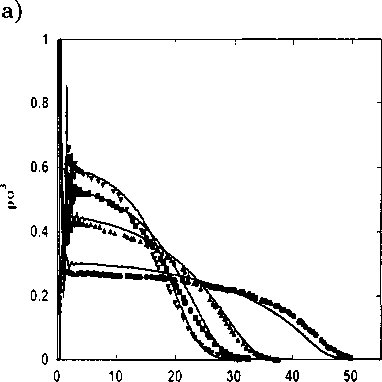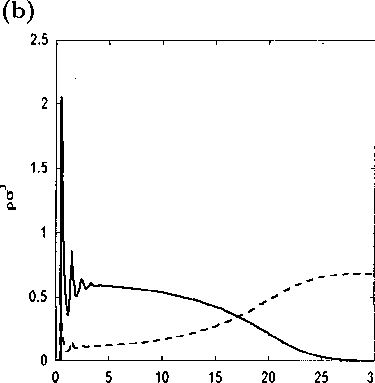
Figure 6.5: (a) Segment density profiles of hard chains tethered to a hard wall for Ng = 100
and pgσ2 = 0.1 in the presence of implicit solvent (∙) and explicit solvent with Nf = 2 (à),
Nf = 5 (■) and Nf = 10 (▼). Symbols are the simulation results from Grest [231] and
curves are the predictions from modified iSAFT. (b) Segment density profiles of polymer
brushes (Ng = 100 and pgσ2 = 0.1) and the free polymer solvent (Nf = 10, pfσ3 = 0.682)
from modified iSAFT.

and the grafting density is fixed to pgσ2 = 0.1. The calculations are done for three
different cases, Nf = 2, 5 and 10. The density of free polymer for all the three cases
is pfσ3 = 0.682, based on the overall monomer density in the system. Figure 6.5a
compares the density profiles of the polymer brush for these three cases with that in
the presence of an implicit solvent (Nf = 0). As can be seen from the figure, the
presence of an explicit solvent (free polymer) significantly affects the structure of the
brush. Since the chains are purely repulsive, the origin of the effect is solely due
to the entropie interactions. Due to volume exclusion, the explicit solvent molecules
compress the brush causing it to partially collapse compared to the case of implicit
solvent. This compression increases with the increase in the number of segments in
162
More intriguing information
1. Draft of paper published in:2. The name is absent
3. I nnovative Surgical Technique in the Management of Vallecular Cyst
4. The growing importance of risk in financial regulation
5. The name is absent
6. Integration, Regional Specialization and Growth Differentials in EU Acceding Countries: Evidence from Hungary
7. Who’s afraid of critical race theory in education? a reply to Mike Cole’s ‘The color-line and the class struggle’
8. The name is absent
9. EU enlargement and environmental policy
10. Retirement and the Poverty of the Elderly in Portugal